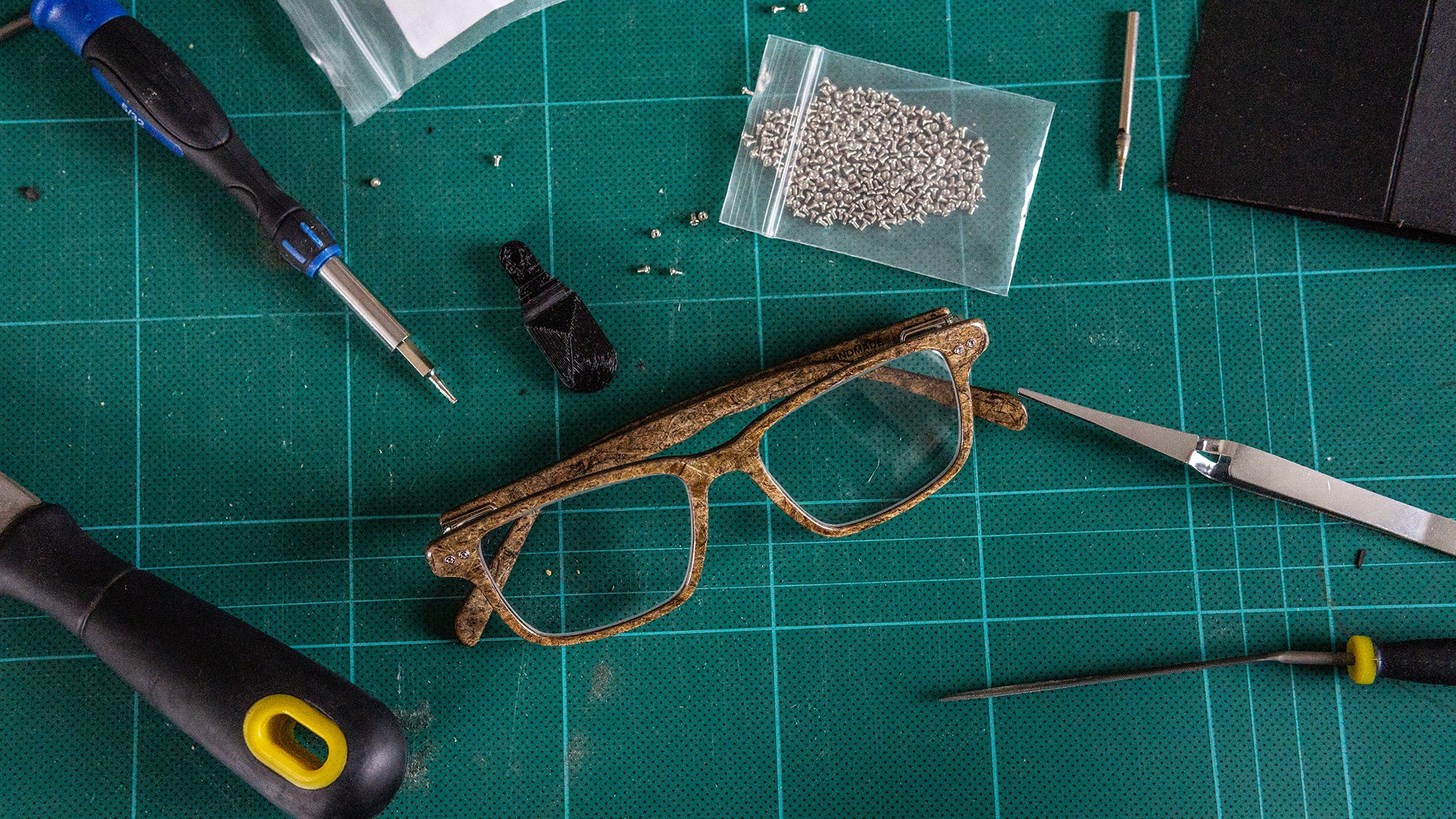
How Sustainable is Hemp?
Industrial hemp is a super crop which has one of the longest and strongest plant fibres in the world. As well as high performance, it has thousands of uses and boasts environmental credentials which are second to none.
With the rise of plastic pollution, climate change and biodiversity loss, it is so important that we find sustainable solutions to these catastrophic issues. Hemp is the environmental hero the world has been waiting for.
From a design point view, the biggest asset of hemp is in the diverse range of uses including; paper, fabric, building materials, medicine, food, biofuel, healthcare products to name a few. There are thousands of uses for hemp in all material forms of the crop too, from underwear to skincare to our very own eyewear. Read on to find out more about the eco power of hemp.

How is hemp farmed?
Hemp can grow almost anywhere in the world, on poor soil, without the need for pesticides or insecticide and it doesn’t require a lot of water compared to comparable crops.
When we say hemp grows almost anywhere in the world, we mean it grows on every continent (except Antarctica). There are strains of industrial hemp which can even grow in the Arctic. It’s a very hardy plant!
Farmers love hemp. It is great for replenishing the soil with valuable nutrients and is often used as a rotational crop. Farmers can use hemp on poor soil which is unusable for arable crops. Hemp has extremely fast growing cycles meaning farmers can harvest higher yields multiple times per year.
Above all else, hemp is plant. This means it absorbs CO2 while it grows through photosynthesis, making hemp carbon-negative from the start of the process.

Hemp vs Cotton
Hemp has been used for centuries to make clothes but more recently cotton has dominated the fashion industry in material choice. Hemp has a lot of benefits over cotton:
- Hemp requires 50% less water than cotton which would save 1300 Litres of water per t-shirt.
- A hemp crop will produce 200-250% more fibre than cotton in the same space of land.
- Cotton accounts for over only 2.6% of the world's cultivated land, but uses 16% of the worlds insecticide use, more than any other major crop. hemp requires no pesticides or insecticides in order to grow.
- Hemp is an insulator in cold weather, breathable in warm weather and a hemp shirt is said to last a lifetime due to the strength of the plant fibres.

Hemp paper
William Shakespeare, George Washington and Vincent Van Gogh all used hemp paper. Hemp pulp has been used for over 2000 years to make paper but recently we have started cultivating trees for wood pulp. This is bad for the environment as trees absorb co2 and take a long time to grow.
Over the size of an acre, it has been shown that a hemp crop will produce 4 times the amount of paper pulp than a tree. Hemp paper is able to be recycled 7-9 times while tree paper is only recyclable 4 times. It also takes less bleach and fewer chemicals to colour hemp paper.
Currently it is more expensive to process hemp paper, but we hope that development of machinery and processing techniques will make the price competitive.

Hempcrete carbon negative houses
By using a mixture of hemp hurds (inner bark like stalk) water and lime, we can make carbon negative housing using hempcrete. Hempcrete is used to build the walls of the building and other parts of the crop (fibre) can be used for press board, flooring and insulation which higher performance than toxic fibreglass insulation.
A leading UK manufacturer of hempcrete has calculated that 165kg net CO2 is sequestered per m3 of wall (hand-pressed). An average sized 2-bedroom home can be carbon negative with hempcrete. Hemp absorbs co2 during it’s growing cycle and it continues to absorb co2 once it is processed into hempcrete. Due to the ‘hands on’ building techniques used with hempcrete as well as other natural materials such as wooden frameworks, this reduces the carbon footprint dramatically.

Hemp Biofuel
Right now, we can run diesel engine cars on hemp biodiesel ( the engines would require a small conversion). Hemp biodiesel is made from hemp oil which comes from pressing the seeds. Hemp oil can convert with 97% efficiency into biodiesel.
Hemp can also be used as biomass which is another kind of fuel and comes from the remaining stalks and leaves not otherwise used for oil production.
We believe hemp is the answer to many environmental problems and it should be used more to combat these issues.
For designers passionate about sustainable eyewear, it’s a perfect fit. The fibre itself is incredibly strong, lightweight and the diversity of material means we can even make our packaging from hemp.
Our goal is to make new hemp products in the future with other forms of hemp (fabric, paper, hempcrete). But for now, our focus is on eyewear.
We want to keep spreading awareness of hemp and promote it as a renewable material of the future. We do this by designing quality forward thinking eyewear which gets attention, adds credibility and changes the conversation about hemp.



